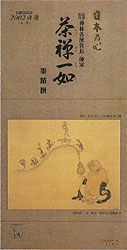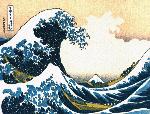
Article Series
Reiki Article SeriesReiki Will Never Be The Same Again |
||
|
If you open any newspaper or magazine that has an "alternative health" section, you will find an advertisement for a Reiki practitioner or Master. Reiki healing is a technique that has been embraced by the west since it was brought to America from Japan by a lady called Hawayo Takata, and you can find Reiki healers all over the planet. However, it is only in the last couple of years that Western practitioners have had the opportunity to learn about Reiki's true origins and its original techniques. The way that Reiki has been presented and taught in the West is very different from what Reiki was supposed to have been. |
 |
|
The commonly taught history of Reiki says that it was developed by Dr Mikao Usui, a Christian theologian, who was prompted to go on a great quest to discover a healing technique, after being questioned by his students about the way that Jesus healed. The story goes that Usui travelled the world, studying theology in Japan and America, and that Reiki came into being after a moment of enlightenment on Mount Kurama, where Usui saw symbols in bubbles of light before him, and came down the mountain with the Reiki system. Almost all books on Reiki will present this story.
However, the story is almost a complete fabrication, put together by Mrs Takata, it seems, to make a Japanese healing technique acceptable to a potentially hostile American public. This was the worst time in history to teach Reiki in America, with Pearl Harbour fresh in people's minds, and all things Japanese regarded with revulsion. So out went Mikao Usui, Tendai Buddhist, and in came Dr Mikao Usui, Christian theologian, and the false history of Reiki came into being. Not only that, but the Reiki system was modified and simplified to make it acceptable to Westerners. For a long time in the West, people thought that Reiki had died out in Japan, and that the only Reiki that remained was Mrs Takata's version. But, in the 1980s, Western Reiki Masters travelling in Japan discovered that Reiki was still being practised there, and that this form of Reiki was very different from what we were doing in the West. Since that time, a lot of information has emerged from Japan, from a variety of sources, and when we bring these various strands of information together we come a long way towards understanding what Mikao Usui would have taught. For example, there is an obscure association in Japan, called the Usui Reiki Ryoho Gakkai (Association for Usui's Reiki Healing System), an organisation that was set up by some of Usui's students shortly after his death. The society does not advertise or promote itself, and, for this reason, Reiki has not been well known in Japan until recently, when there has been an explosion of Western-style Reiki there. Some of the practices of 'the Gakkai' echo Usui's original form of Reiki, though there are sources that take us a lot closer to Usui's system.
|
||
So what is the real history of Reiki? Well, Reiki is rooted in ancient Japanese tradition. Firstly, there is a hundreds of years old tradition of Japanese 'hand-healing' which works on the patient's chi. This system is called 'teate', and it now seems that Usui called his system 'Usui Teate' rather than Reiki. Usui had trained in energy cultivation techniques (for example 'kiko', the Japanese version of QiGong) to the extent that he was able to 'project' his personal chi and carry out what are known as 'projection healings'. He had also trained in martial arts to the highest levels of proficiency, and healing is an aspect of martial arts at the highest levels. Reiki also draws strongly on Shintoism and Tendai Buddhism. Shintoism provided ways of controlling and directing the energy that is channelled, and Tendai Buddhism provided energy exercises that are used to make the practitioner a strong channel for the energy, and spiritual empowerments that are used to connect students to Reiki - to 'attune' them, to use the Western term. In fact, so strong is the connection with Tendai Buddhism, a form of mystical Buddhism, that Usui had his students study Buddhist sutras as part of their training. |
 |
Usui was also a gifted psychic; he studied numerology and astrology and was a member of 'Rei Jyutsu Kai', a high-level clairvoyant and psychic development society. All of these various life experiences contributed to Usui's development of Reiki, and the only part of the 'traditional' history of Reiki that has any basis in fact is Usui's moment of enlightenment on Mount Kurama. Usui carried out the Lotus Repentance meditation, a 21 day period of fasting and meditating, and a resulting satori contributed to 'Reiki' being brought into being. There are many surprises for Western Reiki practitioners, and the first surprise concerns the Reiki 'symbols'. In Western Reiki, symbols are used to control and focus the energies that are channelled, and symbols are taught at 'Second Degree' and Master levels. The symbols are seen as very important, the essence of Reiki, and when you are connected to Reiki, you are said to be 'attuned' to the symbols so that they work for you. In original Usui Reiki, however, there were no symbols, and Usui introduced them later on in Reiki's history for a small number of his students. He introduced symbols to provide a visual focus, but they were not part of his original system at all, and they are not used by 'the Gakkai' to this day. The original way of working with the energies was to use something called 'kotodama', sacred sounds that derive from Shintoism, the indigenous religion of Japan. What you might call original Usui Reiki is very different from Western Reiki. The basis of the original Usui method is to combine three activities that work together to produce quite startling abilities: daily energy exercises, intuitive techniques and regular spiritual empowerments. The energy exercises are designed to strengthen and purify the student's Reiki, increasing their effectiveness as Reiki channels. Students would practice an intuitive technique called ‘Reiji Ho’ which allows the Reiki energy to guide their hands into unique combinations of hand positions – different for each person treated. Only once the student had developed the ability to potentially diagnose disease based on their intuition, or the sensitivity in their hands, would they be allowed to progress beyond the beginner's level. This should be compared with the way that many people teach Reiki in the West, based on 'standard' hand positions that must be applied to all patients in the same way, rather like applying a rubber stamp. Usui's original method meant that you would let your hands show you where to treat, and each treatment would be geared towards the person's individual energy needs. A much more sensible way of doing things. |
|
The
third part of the jigsaw is something called ‘Reiju’. This spiritual
empowerment would be bestowed on students every week on an ongoing
basis. Reiju connects the student to Reiki and reinforces that connection,
and the student then works on and develops that connection further
by practising daily energy exercises. |
 |
Reiju maximises the student's potential in terms of intuition, and the student develops that potential by practising an intuitive technique. Finally, Reiju seems to give the student a spiritual boost, allowing them to travel further along their path of spiritual development. Interestingly, Reiju does not involve the use of any symbols. Reiki in its original form was a spiritual path, with the end goal of satori or enlightenment. The focus of Reiki was the personal benefit that you would obtain, through healing yourself, finding your true path in life, understanding what you were here to do, and achieving contentment, becoming unworried and trusting the universe. Treating others was an important part of your spiritual practice, but not the only part. I am only one of a number of people who have been passing on these new techniques during the last year or so, and they are making a real difference to the people who have learned them. For me, speaking as a Western-style Reiki Master, these new methods feel like 'coming home', they fill the gap or the void that I always felt that there was in the Western form of Reiki. While I do not believe that we should live in a time warp and try to recreate 1920s Reiki, the methods that have emerged from Japan seem to me to be a solid foundation to work from. They give Reiki people practical techniques that can be used to create a stronger channel for Reiki and enhance intuitive working. Ultimately, the original form of Reiki, and the Western form, will merge. There are advantages in this approach. In Japan they seem to have preserved powerful basic techniques that were not passed on in the West. In the West we have taken the limited form of Reiki that we were given, and we have been endlessly creative with the energy, developing new and different ways of working. Both approaches are useful, and by combining them our practice can only become stronger. The main message that I get from all this is that there is a lot more to Reiki than we have yet experienced in the West. While Western Reiki has produced amazing results and changed many people’s lives in incredible ways, we have not even scratched the surface yet. Reiki has been a bit of a 'quick fix' - you go on a day-course and you've got it. While that is true to an extent, if you dedicate yourself to the original system then there is potential for you to greatly enhance your abilities, and enhance the beneficial effects that Reiki will produce within you. This is a very exciting time to be involved in Reiki! Now that the main elements of Mikao Usui’s system is there for all to see, all Reiki practitioners have the opportunity to learn some fundamentals that have the potential to transform their practice. © Taggart King 2001 |
|
| About the Author:: Taggart King is a Reiki Master who teaches in the UK, and also runs day training courses at various locations in Europe, sharing the new techniques from Japan. He can be contacted at: Reiki Evolution: www.reiki-evolution.co.uk, e-mail: taggart@reiki-evolution.co.uk |
Karma-Net Home / Read More Articles / Online Course Listings
| Training Online | |
| Article Series | |
| Home |
| AromaTherapy | |
| Ayurveda | |
| Counseling | |
| Feng Shui | |
| Herbology | |
| Homeopathy | |
| Hypnotherapy | |
| Massage Therapy | |
| Natural Therapies | |
| Teaching | |
| More... |
![]()

